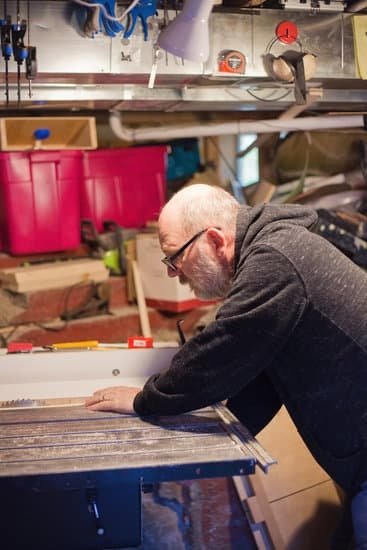Introduction
Woodworking is an art that uses wood to create items of functional and aesthetic value. It is a craft which often involves taking raw pieces of wood, cutting and sanding them down to the desired shape, then gluing and finishing them with a variety of different coatings. Woodworking can range from building furniture to making intricate carvings or sculptures. The most important aspect of any woodworking project is the selection of wood for the job.
Wood for woodworking comes in many different types, sizes and species. Despite the fact that many woods possess similar properties, it’s important to understand the nuances between them when selecting a suitable material for your project. Hardwoods are highly sought after due to their strength and durability while softwoods are more suited towards craft projects; they may be cheaper but require more effort in refining their look. Furthermore, some woods work better with specific types of coating or joinery than others.
The grain in woods such as oak or mahogany gives it its unique character while certain types of woods can be stained or left natural depending on preference. Further step-up processes like French polishing give further depth and richness to wooden surfaces that might not otherwise be achievable with other materials.
Therefore for any successful woodworking project knowledge about the properties and application of various wood types is essential so as attain an optimal balance between aesthetics and performance over time
The Different Types of Woods and Their Properties
Wood is the raw material of a majority of woodworking projects, as it is both versatile and abundant. Wood can be found in numerous varieties that offer unique characteristics, such as hardness and color. The most popular and common woods used in woodworking include oak, maple, cherry, walnut, pine, birch, mahogany, and walnut.
Oak has long been one of the most popular choices for woodworking projects; it carries a warm golden hue and is strong with excellent hardness properties. This makes oak well suited to furniture-making or joinery work. Maple is prized for its distinct cream-white coloration and stability for fine furniture or other intricate pieces. Birch and poplar also carry light hues with whitish tones, and are very durable hard woods indigenous to North America. Cherry is also iconic due to its dark reddish brown hue combined with superior durability making it ideal for cabinets or pieces exposed to heavy daily usage. Walnut is one of the most exclusive woods available with a beautiful reddish black tint marked by an attractive striped grain along its surface. Walnut is often used in turnings and carving due to its strength yet malleability when shaping it into intricate works like clocks or sculptures. Pine offers unique warm tones ranging from yellow to amber but can suffer from marks if not properly sealed against any liquids spilled on top of it; nevertheless pine can still make a great choice for lighter carpentry work like chairs or benches. Finally mahogany’s red-brown hue offers an exotic luxury feel especially well suited for high-end furnishings like tables or bed frames
How to Determine the Right Wood for Your Project
When it comes to woodworking, the most important factor is selecting the right type of wood for your project. You want to ensure that you are choosing a type of wood that has the necessary characteristics for whatever it is you are creating.
To start, determine what kind of look and finish you want for your project. Different types of woods have different properties such as strength, density and appearance. For instance, maple is known for its ability to take a nice finish, so if you are looking for a glossy look or shine then maple would be an ideal choice. On the other hand, oak is known for its strength and durability so it may provide better support against heavier load applications.
It’s also important to consider the cost of each type of wood. Generally speaking, hardwoods like oak are more expensive than softwoods like pine due to their durability and longevity. As such, keep in mind how much money you will need to budget when selecting the perfect type of wood.
Before starting a woodworking project it always important to do your research and understand what characteristics of each type of wood will benefit your project the most. In small-scale projects like furniture or trinket boxes certain kinds of woods could be ideal whereas bigger projects such as outdoor decks or large workspaces may require more resilient woods with greater structural integrity and resistance to wear down over time from harsh weather conditions or stress from heavy weights.
Essential Woodworking Tools & Their Uses
Essential to any woodworking project is selecting the right type of wood. Depending on the project, you may use hardwoods like oak and cherry, pine, and diverse softwoods, or laminates and veneers. Hardwoods tend to be more durable but more expensive while softwoods are less expensive but tend to be more susceptible to wear.
In addition to choosing the right wood, a woodworker needs access to quality tools in order to craft a masterpiece. Among these essential tools are saws (hand saws, miter saws, circular saws) which can be used for cutting various types of woods into desired shapes; hammers (claw hammer or mallet) for driving nails; chisels for shaping and smoothing the surface of solid pieces of timber; planes for creating an even surface by removing small amounts of material from the edges; routers and jointers which are commonly used for shaping edges and making joint marks; drills which allow holes to be made in different sizes and depths depending on a specific project; sanders that create smooth surfaces on wooden materials by using sandpaper abrasives; measuring tools such as tape measures, squares, rulers, etc.; glue guns that can attach pieces of wood together without nails; clamps that keep objects firmly held in place during various stages of construction/assembly; and finally power tools such as electric jigsaws and belt sanders – these are also important in performing faster cutting operations. Aspiring craftsmen should familiarize themselves with these tools before beginning their projects as they will come in handy throughout many tasks related to woodworking.
Advanced Techniques for Working with Wood
Woodworking can be extremely rewarding when done correctly. Many craftsmen and artisans understand the importance of taking time to select only the finest cuts of wood for their projects and mastering some advanced techniques to maximize the quality of each piece. Working with wood requires an understanding of how different grains, widths, and lengths will impact the end result. Additionally, it is necessary to understand how different finishes, polishes, adhesives and stains may alter a final product’s appearance.
In order to achieve desirable results with woodworking projects, it is important to first carefully select wood that is best suited for your project’s purpose. Different species provide distinct characteristics and textures which can help shaped the final product significantly. Consider woods such as oak, walnut or mahagony which are known for their robustness while other species such as cherry or maple provide intricate grain design that stand out visually.
Once the selection process has been completed there are many advanced techniques available to further enhance a finished product including lamination, inlaying joints and strength testing. Lamination refers to attaching thin layers of wood together in order to create dimensionality or complex curves in a piece; inlaying uses smaller pieces of contrasting woods in order to create details such as floral designs or geometric shapes; joint testing involves glueing pieces together then forcing them apart under tension in order to test their strength after assembly.
Some more unique methods include joinery shaping featuring dovetails or tongue-and-groove connections for strength; paint graining offering faux wood grain finishes; finishing involving sanding, staining and varnishing a complete piece; mouldings used creating ornamental frames around cabinetry doors and projects; marquetry allowing saws and routers to cut bits of veneers into desired shapes along with aerosolized acrylic sealants providing an increased level of protection without detracting from previous color choice. These advanced methods allow expert craftsmen make stunning works each created specifically matched with customer expectations while creating something truly unique every single time
Different Finishes & Application Methods
Woodworking wood comes in all shapes, sizes, and species. Depending on the desired look and properties of the project or furniture piece being made, the selection of wood is essential. Additionally, the type of finish that is applied to the wood can considerably affect its appearance and behavior. There are many finishes available now that can be applied by either a brush, roller, or sprayer to get a range of popular looks such as glossy paints, satin lacquers, matt varnishes and oils. Additionally, there are specialty finishes such as crackle glazing, distressing techniques and shabby chic paint effect that help create more customized projects; these featured finishes can also be applied with brushes or rollers but require a certain degree of artistic skill. Alongside these finishes come traditional stains that add a variety of hues to wood pieces which allow them to have a more subtle or muted effect than regular gloss paints. The type of application method used will vary depending on individual preference with sprayers offering an even coverage every time when compared to brush and roller methods which often provide a thicker layer of sealant.
Benefits of Investing in Quality Woodworking Wood
Investing in quality woodworking wood offers both aesthetic and practical benefits to the projects you undertake. Quality wood is strong and durable, and can often support complex shapes and structures without compromising on strength. It is also less likely to warp over time, which can create problems in the finished product. Additionally, when carefully stained or treated, high-quality wood has a natural beauty that cannot be replicated in plastic or synthetic materials. This can add a unique character to any project while also making it more comfortable to use. The natural grains in quality wood stand out nicely and create a timeless appearance that will add character no matter what you’re creating. Finally, investing in good-grade wood will not only result in a better looking object but also one that will last longer with proper care.
The Future of Woodworking and Wood
Woodworking and wood as a material has come a long way over the past few decades, but the advancements are only continuing to grow. With technologies such as 3D printing and robotics, woodworking is becoming even more precise than ever before. This allows for faster production times, higher quality workmanship, and an overall easier experience when it comes to creating beautiful pieces of furniture or architectural structures. Additionally, with advancements in sustainable forestry practices, rational land use management strategies, and improved logging controls over the last decade or so, responsibly sourced hardwoods are increasingly being used in furniture production”which not only reduces forest degradation but also ensures that future generations will have access to high-quality timber resources. Likewise, new innovations such as softwood composites allow craftsmen with smaller budgets to create stunning pieces without harming the environment. As technology continues to move forward and more sustainable practices become commonplace across all industries involved in woodworking activities”from felling trees for lumber to milling boards for furniture-making”it’s clear that woodworking techniques will be a major industry driver in the years to come.
Conclusion
Woodworking wood is a popular hobby because it opens up many possibilities for all types of projects. Wood presents a fairly durable material that can be manipulated into almost any shape or size. If a person has ideas or artistic visions, woodworking allows them to bring those plans to reality with the right tools and techniques. With the right dedication and skill level, people can build complex wooden pieces whether they are furniture or decorations, making woodworking one of the most accessible and versatile hobbies out there.
By practicing certain techniques, and closely following directions when taking on new projects, one can maximize their potential in creating quality wooden projects. Safety must always come first when using tools such as saws, drills and planers, since these items have sharp blades and require careful handling. When cutting or shaping wood with these tools, proper workpieces must be used so that saw teeth get an even angle for best results and mistakes don’t occur during production. Also, using appropriate adhesives such as nails and screws are important too since this helps ensure the durability of the objects created from wood. Paint finishes (if used) should also be carefully chosen so that the project looks great for years to come without fading over time due to outdoor elements or general wear-and-tear. By considering each step involved in a project before beginning a project and ensuring everything is done properly during its execution, one individuals can greatly increase their success in producing quality pieces with long-lasting results.

Hi everyone! I’m a woodworker and blogger, and this is my woodworking blog. In my blog, I share tips and tricks for woodworkers of all skill levels, as well as project ideas that you can try yourself.





